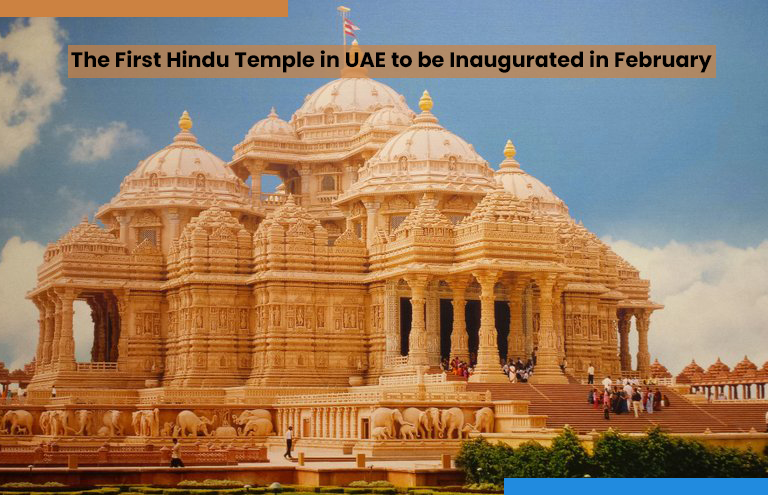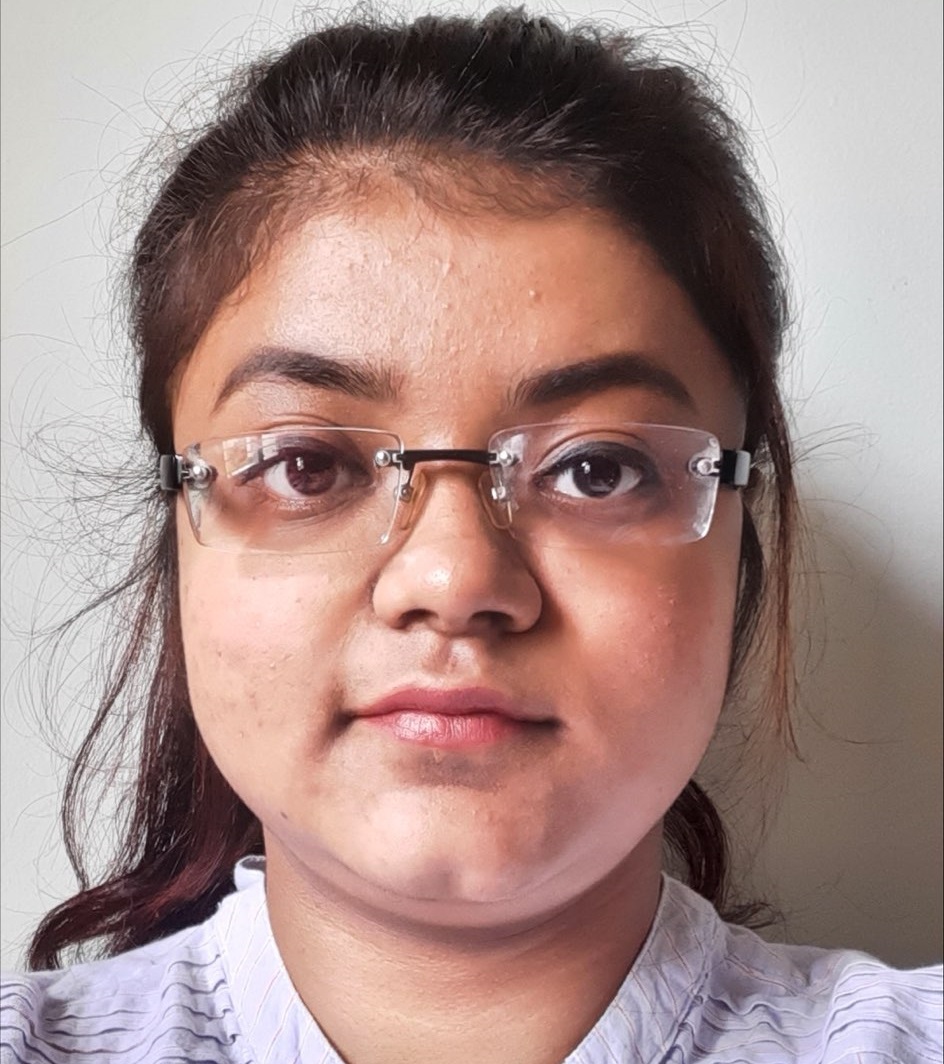
First Hindu Temple in UAE to be Inaugurated in February
The first Hindu temple in UAE will be inaugurated next year. Narendra Modi, the honourable prime minister of India is to institute the very first Hindu temple landmark at Abu Dhabi in February 2024.
Baps Swaminarayan Sanstha, the organisers of building this temple said, Prime Minister Narendra Modi is set to attend a scheduled dedication ceremony on Wednesday, February 14, 2024, after consecrating and blessing seven divinities during special prayers in the morning.
This is the first hand-carved traditional Hindu temple in the United Arab Emirates which is located in the area of Abu Mureikha in Abu Dhabi. This area is also among the main motorways connected between the capital and Dubai. The temple will be open to the public later on February 18, 2024.
The construction of the most anticipated religious structure, this Hindu temple will feature eye-catching sculptures created on white marble and pink sandstones. The structure of art is expected to gather many crowds.
Despite the frames which are covered with detailed carvings, the delicate arches made on marvel, and soaring pinnacles are clear and visible. The covers will be taken off soon by the end of this month once the sculptors will complete the artistic interior work.
According to the statement shared by the director of this project, Mr. Pranab Desai on February 14 morning, the ceremony of “Murti Pratistha” will begin, which is also called as invocation process of the idols, and right after in the evening the public dedication ceremony will begin. The occasion will be more impactful with the presence of the respected Prime Minister of India, Narendra Modi. He also said the inauguration ceremony will be equally overwhelming for the organisation to witness the final phase and the ultimate stretch of work being completed.
The project of building this temple was launched back in the year 2018 by Narendra Modi when he presented the very first model of this monument with seven spires which will represent the seven Emirates in the United Arab Emirates.
Seven Spires, Seven Emirates
The process of sculpting process began back in 2020 and the striking shape of the temple, seven spires or “Sikhars” and the carved pink stonework have now risen up from the desert landscape of the United Arab Emirates.
According to the spiritual guru of Baps, Mahant Swami Maharaj has called it a miracle, and compared it with a lotus, which blossomed in the desert in a video released after the new prayers to celebrate the installation of Sikhars or spires. The seven spires represent the seven Emirates within the United Arab Emirates. Every section of this temple describes the story of life and the lessons of the divine beings worshipped by the believers of Hinduism across the World.
The carves also represent enlightenment from other cultures as a symbol of respect towards all the different religions around the world.
“The spires symbolically represent the seven emirates of the UAE as our way to say thank you to the leadership. The seven spires will have deities from the north, south, east, and west of India. There will also be 14 value tales from the Arabic region, Chinese, Aztec, and from Mesopotamia that show how love is universal across all cultures,” Mr. Pranab Desai said.
The temple is capable of holding a crowd of between 8000 and 10,000 people at a time, and the doors will be open for all even those from different faiths. Once people visit the temple, they will witness two streams of water which are made to symbolize the two holy rivers of India, The Ganga and Yamuna. There also will be a bright beam of light as a representation of the Saraswati river. The light will be trained under the structure of the temple. Before entering the temple, the worshippers also can ring a series of hanging small copper and brass bells and step inside.
According to Mr. Desai, it itself a beautiful experience to watch the flowing stream of water and ringing the bells. This is a temple that has been built with the deepest inspiration of three holy rivers in India, Ganga, Yamuna, and Saraswati. The visitors can go up using the flights of stairs as well as the two elevators concealed and placed between two craved structures to land on the first level of this structure and pray before the god. The elaborative carvings bring old traditional stories to life, such as the celebrations that took place to welcome Rama, the Hindu God at Ayodhya, the ancient town in Hindu mythology. Right after coming out from the first level, the visitors will witness the stores describing each deity captured in the carvings.
Mr. Desai said the complete Ayodhya Nagari or town is sculpted in a 3D format on a structure of one single stone but the visitors can clearly see all the different layers. All the stories most of us have come across during our childhood, and the same will be drawn in the form of carvings that can be explored by the visitors while roaming around the temple.
Architectural wonder
Over the past three years, there were a number of more than 2,000 artisans who belong to Rajasthan and Gujarat states in India, have carved approximately 402 white marble pillars and created this amazing form of artistic structure. To complete one single pillar four artisans were assigned and took at least one year due to the difficult level of detailed artwork. No pillar has the same stories carved within from the scriptures of India, and there are 1000 different statues made there representing supreme beings and spiritual gurus shaped into ceilings and columns. Exceptional sculptures carved elephants, peacocks, camels, horses, the different phases of the moon, and musicians playing sitar, beating drums, and many other musical instruments. One single pillar which is specifically carved pillar elaborated and decorated with the same carvings from a number of more than 1400 smaller pillars.
“This needed to be carved with such precision. The artisans first do a pencil drawing on paper, then a pencil drawing on the stone that indicates the area they have to cut. And then with a chisel and hammer, they carve out the entire stone. But this is not a computer that you can erase and correct it if you make a mistake. Even a small error means that despite months of effort, they had to redo the whole thing from scratch,” said Mr. Pranab Desai.
Following the same traditional practice of ancient shrines, the construction does not involve steel or iron reinforcements. Larger than 20,000 tonnes of marble and stones were brought to Abu Dhabi, in more than 700 containers throughout the past three years. Each of the carvings was marked with a particular number when it was in India and placed inside the wooden crate by maintaining the serial of marking and finally securely placed inside the site of the temple naked with the same serial or codes. The technique of constructing the temple followed the method of compression with granite at the bottom and layered with marble and pink snd stones to add extra strength and place the blocks on the spot.
Connecting cultures
The huge complex of this temple is surrounded by buildings that include a community centre to host many cultural events, multiple prayer halls, a park for children, a dedicated library, and also an amphitheatre through which a stream cuts around. There will be a dune made of sand inside the compound is being replicated and the visitors will come inside that to reach the centre for visitors to register themselves and go through the complete process of security check.
“When they sit in the amphitheatre after completing darshan (worship), it will feel like sitting on the ghats of the Ganga river,” Mr. Desai said referring to the flight of steps that lead to rivers in India.
Mr. Desai also described that Right after sitting inside the amphitheatre after worshipping the god or completing the darshan process, it will give an exact feeling of sitting at the peaceful ghats of the Ganga. He also mentioned the flight of steps will lead the visitors to the water stream which is a replication of the river ghats in India. The main aim of this temple is to connect two cultures that are completely different from each other, and the two countries that are already quite close. This first Hindu temple in the United Arab Emirates is the way to bring them even more closer and unite them together.
Prayer ceremonies at the temple will begin on February 10, 2024. The prayers are the part of a festival of harmony. February 14, which is selected for the day of the deity consecration ceremony, as it falls on the auspicious occasion of Vasanth Panchami, a day in Hindu religion that signifies the start of the spring season.
Around the site of the temple, there is a makeshift tent placed which is usually filled with a combination of residents from the United Arab Emirates, politician characters, actors from Bollywood, and respected Government officers who are excited and equally curious to witness the progress of the Hindu temple.
The traditional Hindu temple is being represented as a symbol of harmony, and a set example of tolerance of the United Aran Emirates. A smaller version of the Hindu temple was opened in Dubai last year, in the Jabel Ali area which is also known as the home of many churches and a Sikh gurudwara. The Hindu temple in Dubai was one popular destination in UAE that connected more than 1.6 Million people from different cultures in the very first year of its opening. The temple is a place to celebrate marriage between different nationalities living in Dubai and daily prayers.
Strong faith
The everyday prayer ceremony will take place between 9:00 am in the morning and 5:00 pm in the evening when all the visitors can attend and be a part of the ceremony to bless the bricks which will be used as part of the constructions.
The director of the temple project, Mr. Pranab Desai elaborated that thousands of community members are registering themselves to join and make themselves a part of the prayers from different locations across the United Arab Emirates.
Mr. Desai also expressed his gratitude saying how happy he was that he was not only representing the faith of the Hindu culture but additionally bringing all the different cultures and people all together.
The organization, Named Baps has built nearly 1200 temples across India, the United Kingdom, the United States, South Africa, Australia, and Kenya.
The temple is being built on more than 5.4 hectares of land which were assigned to the Indian community in the year 2015 by President Sheikh Mohamed when he was in power and called the Crown Prince of Abu Dhabi. Some volunteers from different parts of the world invested their valuable time to make this project a success.
“I’m meeting so many people and explaining things to them. These are skills I could not have picked up in university,” said Harikrishna Patel, 21, from Tampa, Florida on a gap year from studying cyber security engineering. My favourite part is how anybody that walks in – whether a stranger or somebody we know – they all walk out with a smile,” said one of the volunteers.

 Previous Article
Previous Article